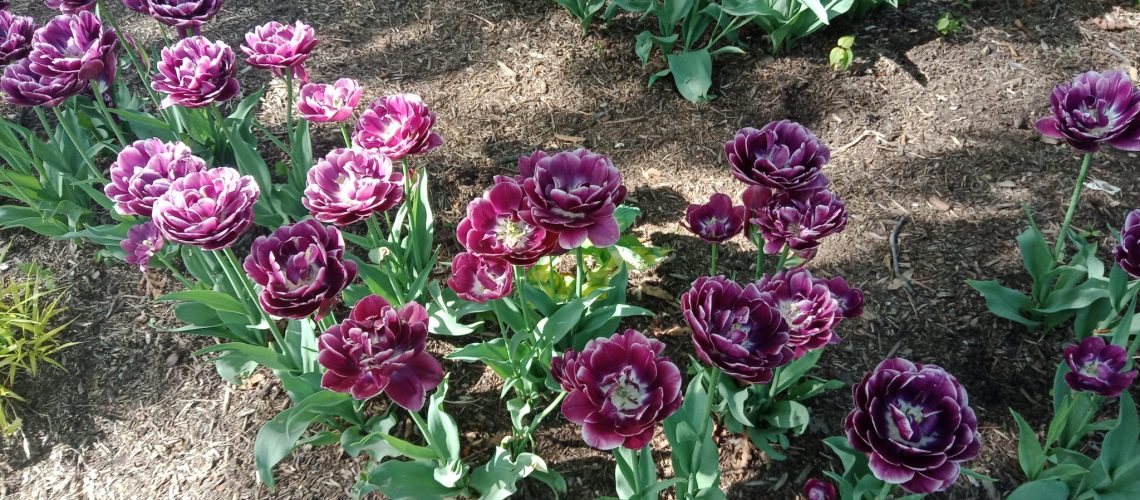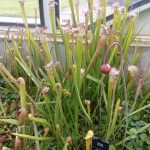In the present day world, air, water and food are getting polluted at an alarming rate and are becoming harmful for human use. In such circumstances it is in our hands to control the pollution of water and food. Even if pollution cannot be stopped, we can do our own bit to reduce it and above all save ourselves from the ill – effects of such a degradation. For water we can take care by drinking purified and boiled water and for food – the dry ingredients can be subjected to quality checks and then used
- But for wet ingredients like fruits and vegetables making quality checks becomes difficult and cumbersome. Hence if we are able to grow our own safe vegetables and fruits in our backyards the problem will be solved.
2. This type of cultivation which is carried out in backyards by using natural fertilisers and pest repellents is Organic farming or green farming which is bound to change the fate of earth and its resources for the better.
3. People on this earth are all concerned about the health of the planet and its survival at the hands of its ever-growing population. The remedy seems to be the use of sustainable measures and in growing crops it is traditional method of cultivation. In the first step just as we say Charity begins at home, households can initiate traditional farming at their own backyards or any other available space which receives sunlight at some point during the day.
4. Growing our own fruits and vegetables will help us increase our daily intake of fruits and vegetables as per recommended quantity for a healthy body. Hence this Kitchen can also be referred to as a Nutritional garden. Fruits and vegetables provide us the majority of the minerals and vitamins that we require for our disease-free existence.
5. Based on the type of minerals provided the combination of fruits and vegetables have to be grown which will be fresh, non-toxic and nutrient –rich. Growing vegetables and fruits at home helps children understand the importance of the environment and appreciate the greatness of being a farmer.
6. It makes us independent, self sufficient and helps us make the best use of the organic wastes generated in the kitchen.
Depending on whether the kitchen garden is set in a rural or urban area land availability will be determined. In rural areas land will not be a limitation but in urban areas terraces and balconies have to be used. Plants can be grown in a variety of containers like plastic cans, bottles, cups, empty car battery boxes, broken buckets or any other container that is waste and is able to hold soil and moisture.
In rural areas plants are grown on land but in urban areas roof tops may be used and in such cases certain precautions have to be taken to check seepage and increasing the weight excessively. Hence it becomes necessary to think about different types of cost-effective substrata for growing plants.
Selection of a site and Garden layout
A kitchen garden is usually established in the backyard and an ideal garden should have a 200 square metre area to suffice for a family of five members. The garden needs to be rectangular rather than a square one or a thin long strip.
The garden layout and selection of crops is done on the season and the agro-climatic conditions of the area and can be modified according to the prevailing conditions.
The general considerations to be followed in the garden layout can be summarised as follows:
Perennial vegetables especially curry leaf (Murraya koenigii) and drumstick have to confined to one end of the garden to prevent shading of the other crops and especially drumstick (Moringa) that develops hairy caterpillars soon after the monsoon.
One or two pits for composting have to be provided at another end of the garden to help process the kitchen wastes.
A proper fencing either of barbed wire or a live fence is required.
The four sides of the garden can have star goose berry (Saurops androgynus), ivy gourd (Coccinia grandis), Dolichos bean (Broad bean) and Ridge gourd. A combination of any of these may be used as desired. The fence can be further fortified by planting Sesban (Agathi) at one metre distance. This produces leaves which are edible and rich in iron
The entry to the garden can be made into an arch with red or white Basella vines that produce nutritious leaves rich in iron
Excluding the space provided for perennial crops and compost pits, the rest of the plot is divided into 6 or 10 parts for growing annual vegetable crops.
Crop rotation if followed in the right way will allow three crops to be raised in the same soil
Apart from this inter-cropping or companion cropping will allow for additional crops that help judicious use of space and prevent pest infestation
Walking paths to be allowed in the centre and on the four sides and can be lined with red or green Amaranths or Alternanthera
The ridges can be used to grow root crops like radish and tuber crops
Fertility of the soil to be maintained using organic amendments to the soil by the use of green manure or farmyard manure or the generated compost at regular intervals
Clean cultivation methods to be followed as the crops are directly used
Look at cultivating disease resistant varieties, biological control methods, manual removal of affected and diseased parts
Kitchen garden must look at propagation of traditional varieties rather than high yielding hybrid varieties
Provision for a bee-hive is a must in the garden for attracting pollinators and for honey
To start with, all eggs and larvae on the growing plants to be removed and then Neem oil at a concentration of 2 mL/litre or Neem seed kernel at 3% to be sprayed as a bio-pest-repellent
Recommended fruit crops
Mango, Amla, banana, sapota, acid lime , lemon, Guava, Pomegranate and Papaya
Recommended Vegetable crops
Beans, Broad bean, Cluster bean, Sword bean, Bitter gourd, Snake gourd, Ridge gourd,Water melon, Bottle gourd, Radish and Okra as direct sown vegetables
As transplanted vegetables –Tomato, Chillies and Brinjal can be grown
Fenugreek, Turmeric, Ginger and Coriander can be spices for the garden
Some medicinal plants are also needed to be grown that can be listed as – Sesban, Aloe vera, lemon grass, Cissus (Perandai), Phyllanthus (Keelanelli), Manathakkali (Solanum nigrum), Eclipta alba (Karisalanganni)
CROPPING PATTERN IN A KITCHEN GARDEN
| Plots | May-June to September -October | September –October to December -January | December -January to May-June |
| ANNUAL CROPS | |||
| i) | Bitter Gourd | Yard Long bean | Snake gourd |
| ii) | Brinjal and Chilli | Brinjal and Chilli | Okra |
| iii) | Ash Gourd | Pumpkin | Amaranthus |
| iv) | Cowpea | Tomato | Cucumber/Melon |
| v) | Okra | Ash gourd | Chilli/brinjal |
| vi) | Pumpkin | Okra | Yard Long bean |
| PERENNIAL CROPS | |||
| i) | Vegetables | Drumstick, Curryleaf, Bilimbi, Culinary banana | |
| ii) | Fruits | Banana, lemon, Papaya, Guava, Gooseberry | |
| INTER-CROPS IN PERENNIAL PLOTS | |||
| i) | Fruits | Pineapple | |
| ii) | Vegetables | Taro, elephant foot yam, Chinese potato | |
| iii) | Spices | Chilli, Ginger, Turmeric, Mango ginger | |
| Border of walking paths | Amaranth, Bush cowpea, Bush Dolichos bean | ||
| FENCE | |||
| Perennials | Chekkurmanis (Star goose berry), Ivy gourd, Agathi | ||
| Rainy Season | Sword bean, Clove bean | ||
| Winter Season | Ridge gourd, Yard long bean | ||
| Rainy to Summer (July- February) | Dolichos bean, Winged bean |
The table clearly gives the cropping pattern and the type of crops that can be grown all over the year and based on the area this may be varied by referring to the corresponding season and crop.











